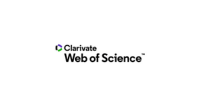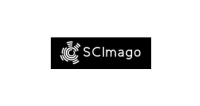PARASITOLOGICAL DIAGNOSIS OF ISLAND SNAKES KEPT IN CAPTIVITY AT THE BUTANTAN INSTITUTE
DOI:
https://doi.org/10.5380/avs.v23i3.58549Palavras-chave:
Bothrops alcatraz, Bothrops insularis, helminths, nematodes, tapewormsResumo
The aim of this study was to identify the endoparasites and to verify the efficacy of their prophylactic control of Bothrops insularis and B. alcatraz kept in captivity. Snakes were treated ex-situ with ivermectin and praziquantel, and parasitological examinations were performed on fresh feces. We evaluated 43 individuals of B. insularis (26 wild-caught adults and 17 young born in captivity) and 9 of B. alcatraz (4 wild-caught adults and 5 young born in captivity) kept in the Laboratory of Ecology and Evolution, Butantan Institute, São Paulo, Brazil. Using direct examination and the Willis Mollay technique, we observed the presence of the cestode Ophiotaenia sp. (eggs and proglottids) in 33.3% of B. alcatraz individuals. However, cestodes were found only in wild-born adult females. Eggs from a mouse parasite (Syphacia obvelata) were found in 27.9% of B. insularis individuals. We conclude that ivermectin and praziquantel were effective to treat nematodes and cestodes. Wild-caught snakes need to be treated against cestodes because, in captivity, this parasite causes anorexia, anemia, and weight loss. The presence of S. obvelata (a non-pathogenic mouse parasite) was due to feeding the snakes with laboratory mice.
Downloads
Publicado
Como Citar
Edição
Seção
Licença
Autores que publicam nesta revista concordam com os seguintes termos:
- Autores mantém os direitos autorais e concedem à revista o direito de primeira publicação, com o trabalho simultaneamente licenciado sob a Creative Commons - Atribuição 4.0 Internacional que permite o compartilhamento do trabalho com reconhecimento da autoria e publicação inicial nesta revista.
- Autores têm autorização para assumir contratos adicionais separadamente, para distribuição não-exclusiva da versão do trabalho publicada nesta revista (ex.: publicar em repositório institucional ou como capítulo de livro), com reconhecimento de autoria e publicação inicial nesta revista.
- Autores têm permissão e são estimulados a publicar e distribuir seu trabalho online (ex.: em repositórios institucionais ou na sua página pessoal) a qualquer ponto antes ou durante o processo editorial, já que isso pode gerar alterações produtivas, bem como aumentar o impacto e a citação do trabalho publicado.













